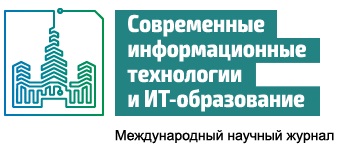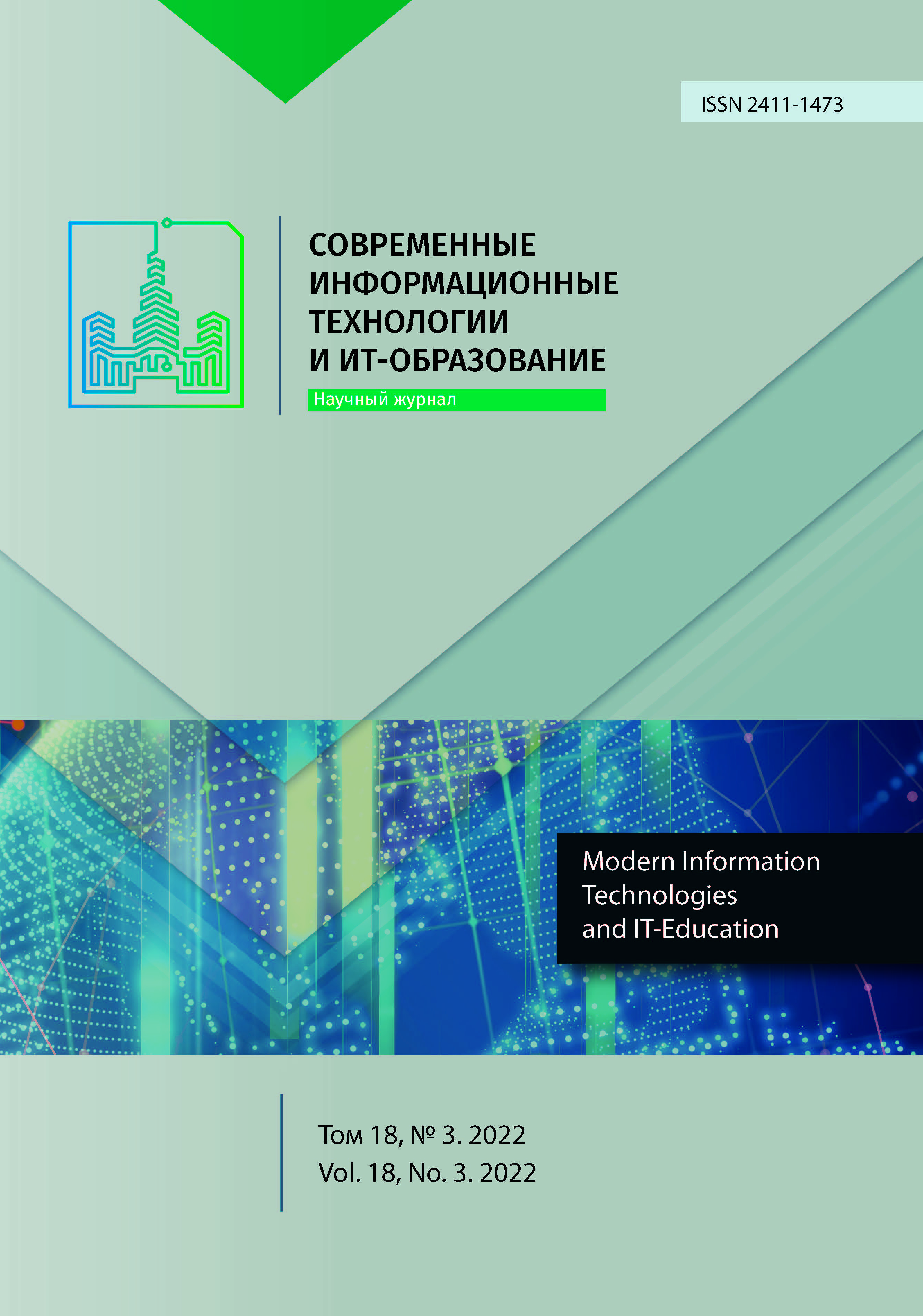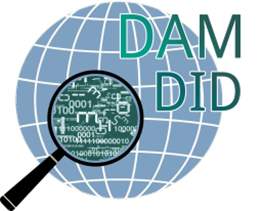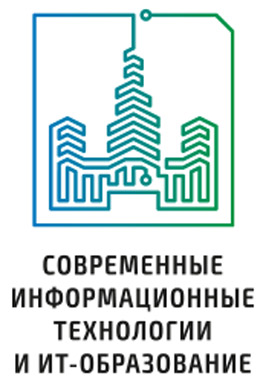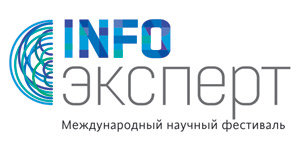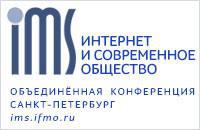Сравнительный анализ производительности MPI- и OpenMP-программ на примере параллельных расчетов в рамках модели ядро-ядерного потенциала и модели φ0-спинтроники
Аннотация
Представлены результаты проведенного исследования производительности проблемно-ориентированных программ, разработанных с использованием технологий параллельного программирования MPI и OpenMP и реализующих численное решение задач в рамках двух моделей, активно используемых в ядерной физике и физике сверхпроводящих структур. Первая задача – это построение потенциала ядро-ядерного рассеяния на основе модели двойного фолдинга (МДФ), которое сводится к численному решению методом последовательных приближений нелинейного интегрального уравнения с интегралами кратности 4. Вторая задача – моделирование переворота магнитного момента в джозефсоновских φ0-переходах системы "сверхпроводник – ферромагнит – сверхпроводник" (СФС) на плоскости параметров модели. Расчет здесь сводится к многократному численному решению задачи Коши для соответствующей системы обыкновенных дифференциальных уравнений при значениях параметров, пробегающих с некоторым шагом заданные интервалы. Несмотря на кардинальные различия в целях и методах численного исследования, обе задачи обладают общими свойствами – относительно легко реализуемым параллелизмом и не слишком высокими требованиями к затратам компьютерных ресурсов. Для обеих задач представлены результаты сравнительных расчетов MPI- и OpenMP-версий, полученные на разных вычислительных системах при использовании разных компиляторов и разного количества MPI-процессов и OpenMP-потоков. Показано, что для задач подобного типа обе технологии в целом обеспечивают сопоставимые характеристики по ускорению вычислений и минимально достигаемому времени счета при увеличении числа задействованных параллельных MPI-процессов и OpenMP-потоков. Расчеты проводились на вычислительных ресурсах Многофункционального информационно-вычислительного центра Лаборатории информационных технологий имени М.Г. Мещерякова Объединенного института ядерных исследований.
Литература
2. Ezhova N.A., Sokolinsky L.B. Survey of Parallel Computation Models. Bulletin of the South Ural State University. Series: Computational Mathematics and Software Engineering. 2019;8(3):58-91. (In Russ., abstract in Eng.) doi: https://doi.org/10.14529/cmse190304
3. Foster I. Languages for Parallel Processing. In: Błażewicz J., Ecker K., Plateau B., Trystram D. (eds.). Handbook on Parallel and Distributed Processing. International Handbooks on Information Systems. Berlin, Heidelberg: Springer; 2000. p. 92-165. doi: https://doi.org/10.1007/978-3-662-04303-5_3
4. Lukyanov V.K., Zemlyanaya E.V., Lukyanov K.V. Nucleus-nucleus scattering in the high-energy approximation and optical folding potential. Physics of Atomic Nuclei. 2006;69(2):240-254. doi: https://doi.org/10.1134/S1063778806020086
5. Shukrinov Yu.M., Rahmonov I.R., Sengupta K., Buzdin A. Magnetization reversal by superconducting current in φ0 Josephson junctions. Applied Physics Letters. 2017;110(18):182407. doi: https://doi.org/10.1063/1.4983090
6. Adam Gh., et al. IT-ecosystem of the HybriLIT heterogeneous platform for high performance computing and training of IT-specialists. CEUR Workshop Proceedings. 2018;2267:638-644. Available at: http://ceur-ws.org/Vol-2267/638-644-paper-122.pdf (accessed 19.07.2022).
7. Khoa D.T., Knyazkov О.М. Exchange Effects in Nucleus-Nucleus Potentials and Nuclear Rainbow Scattering. Physics of Elementary Particles and Atomic Nuclei. 1990;21(6):1456-1498. Available at: http://www1.jinr.ru/Archive/Pepan/1990-v21/v-21-6/pdf_obzory/v21p6_04.pdf (accessed 19.07.2022). (In Russ., abstract in Eng.)
8. Lukyanov K.V. Double Folding Model of Nucleus-Nucleus Potential: Formulae, Iteration Method and Computer Code. In: Communication of the Joint Institute for Nuclear Research. Р11-2007-38. Dubna: JINR; 2007. 30 p. Available at: http://www1.jinr.ru/Preprints/2007/038(P11-2007-38).pdf (accessed 19.07.2022). (In Russ., abstract in Eng.)
9. Khoa D.T., Satchler G.R. Generalized folding model for elastic and inelastic nucleus–nucleus scattering using realistic density dependent nucleon–nucleon interaction. Nuclear Physics A. 2000;668(1-4):3-41. doi: https://doi.org/10.1016/S0375-9474(99)00680-6
10. Goldobin E., Koelle D., Kleiner R., Buzdin A. Josephson junctions with second harmonic in the current-phase relation: Properties of φ junctions. Physical Review B. 2007;76(22):224523. doi: https://doi.org/10.1103/PhysRevB.76.224523
11. Bashashin M.V., Zemlyanaya E.V., Shukrinov Yu.M., Rahmonov I.R. MPI-implementation of numerical solution of the system of equations describing the long Josephson junctions model. System Analysis in Science and Education. 2015;(4):6-12. Available at: https://www.elibrary.ru/item.asp?id=26695118 (accessed 19.07.2022). (In Russ., abstract in Eng.)
12. Bashashin М., Zemlyanaya E., Lukyanov K. Double-Folding Nucleus-Nucleus Optical Potential: Parallel MPI and OpenMP Implementations. EPJ Web of Conferences. 2020;226:02004. doi: https://doi.org/10.1051/epjconf/202022602004
13. Bashashin M.V., Zemlyanaya E.V., Kakenov M.B., Yermekova A.Ye., Lukyanov K.V. Analysis of the 12;14Be+12C Scattering Data within a Parallel Implementation of 4-Parameter Model. AIP Conference Proceedings. 2021;2377(1):060003. doi: https://doi.org/10.1063/5.0063345
14. Buzdin A. Direct Coupling Between Magnetism and Superconducting Current in the Josephson φ0 Junction Physical Review Letters. 2008;101(10):107005. doi: https://doi.org/10.1103/PhysRevLett.101.107005
15. Buzdin A.I. Proximity effects in superconductor-ferromagnet heterostructures. Reviews of Modern Physics. 2005;77(3):935-976. doi: https://doi.org/10.1103/RevModPhys.77.935
16. Konschelle F., Buzdin A. Magnetic Moment Manipulation by a Josephson Current. Physical Review Letters. 2009;102:017001. doi: https://doi.org/10.1103/PhysRevLett.102.017001
17. Atanasova P.K., Panayotova S.A., Rahmonov I.R. Shukrinov Yu.M., Zemlyanaya E.V., Bashashin M.V. Periodicity in the Appearance of Intervals of the Reversal of the Magnetic Moment of a ϕ0 Josephson Junction. JETP Letters. 2019;110(11):722-726. doi: https://doi.org/10.1134/S0021364019230073
18. Atanasova P.K., Panayotova S.A., Zemlyanaya E.V., Shukrinov Y.M., Rahmonov I.R. Numerical Simulation of the Stiff System of Equations Within the Spintronic Model. In: Nikolov G., Kolkovska N., Georgiev K. (eds.). Numerical Methods and Applications. NMA 2018. Lecture Notes in Computer Science. Vol. 11189. Cham: Springer; 2019. Р. 301-308. doi: https://doi.org/10.1007/978-3-030-10692-8_33
19. Lukyanov K.V., Zemlyanaya E.V., Lukyanov V.K., Kukhtina I.N., Penionzhkevich Yu.E., Sobolev Yu.G. Microscopic analysis of the energy dependence of the 6He, 6Li + 28Si total reaction cross sections in the energy range E = 5−50 A MeV. Bulletin of the Russian Academy of Sciences: Physics. 2008;72(3):356-360. doi: https://doi.org/10.3103/S1062873808030192
20. Bashashin M.V., Zemlyanaya E.V., Rahmonov I.R., Shukrinov Yu.M., Atanasova P.Kh., Volokhova A.V. Numerical approach and parallel implementation for computer simulation of stacked long Josephson junctions. Computer Research and Modeling. 2016;8(4):593-604. Available at: https://elibrary.ru/item.asp?id=26716888 (accessed 19.07.2022). (In Russ., abstract in Eng.)
21. Tanihata I., Hirata D., Kobayashi T., Shimoura S., Sugimoto K., Toki H. Revelation of thick neutron skins in nuclei. Physics Letters B. 1992;289(3-4):261-266. doi: https://doi.org/10.1016/0370-2693(92)91216-V
22. Bashashin M., Nechaevskiy A., Podgainy D., Rahmonov I., Shukrinov Yu., Streltsova O., Zemlyanaya E., Zuev M. Parallel Algorithms for Studying the System of Long Josephson Junctions. CEUR Workshop Proceedings. 2019;2507:392-396. Available at: http://ceur-ws.org/Vol-2507/392-396-paper-72.pdf (accessed 19.07.2022).
23. Klimentov A.A. Exascale Data Processing in Heterogeneous Distributed Computing Infrastructure for Applications in High Energy Physics. Physics of Particles and Nuclei. 2020;51(6):995-1068. doi: https://doi.org/10.1134/S1063779620060052
24. Lukyanov V.K. Kadrev D.N., Zemlyanaya E.V., Lukyanov K.V., Antonov A.N., Gaidarov M.K. Microscopic analysis of quasielastic scattering and breakup reactions of the neutron-rich nuclei 12,14Be. Physical Review C. 2019;100(3):034602. doi: https://doi.org/10.1103/PhysRevC.100.034602
25. Panayotova S., Bashashin M., Zemlyanaya E., Atanasova P., Shukrinov Yu., Rahmonov I. Parallel Numerical Simulation of the Magnetic Moment Reversal within the ϕ0-Josephson Junction Spintronic Model. EPJ Web of Conferences. 2020;226:02018. doi: https://doi.org/10.1051/epjconf/202022602018

Это произведение доступно по лицензии Creative Commons «Attribution» («Атрибуция») 4.0 Всемирная.
Редакционная политика журнала основывается на традиционных этических принципах российской научной периодики и строится с учетом этических норм работы редакторов и издателей, закрепленных в Кодексе поведения и руководящих принципах наилучшей практики для редактора журнала (Code of Conduct and Best Practice Guidelines for Journal Editors) и Кодексе поведения для издателя журнала (Code of Conduct for Journal Publishers), разработанных Комитетом по публикационной этике - Committee on Publication Ethics (COPE). В процессе издательской деятельности редколлегия журнала руководствуется международными правилами охраны авторского права, нормами действующего законодательства РФ, международными издательскими стандартами и обязательной ссылке на первоисточник.
Журнал позволяет авторам сохранять авторское право без ограничений. Журнал позволяет авторам сохранить права на публикацию без ограничений.
Издательская политика в области авторского права и архивирования определяются «зеленым цветом» в базе данных SHERPA/RoMEO.
Все статьи распространяются на условиях лицензии Creative Commons «Attribution» («Атрибуция») 4.0 Всемирная, которая позволяет другим использовать, распространять, дополнять эту работу с обязательной ссылкой на оригинальную работу и публикацию в этом журналe.
